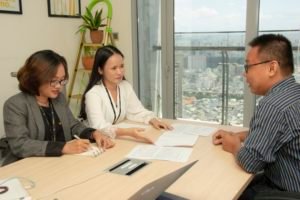Reading Passage 1
You should spend about 20 minutes on Questions 1-13, which are based on Reading Passage 1 below.
Australia’s Convict Colonies
A. The 1700s in Britain saw widespread poverty and rising crime, and those convicted of crimes faced harsh penalties, including transportation to one of Britain’s overseas colonies. Since 1615, convicts had been transported to Britain’s American colonies, both as punishment and a source of labour, but this practice was halted by the Revolutionary War in America (1775-1783). The British government decided to establish a new prison colony, and Botany Bay in New South Wales was chosen as the site. (Captain Cook, exploring the southeast coast of Australia in 1770, had named the land New South Wales and claimed it for Britain.) Between 1787 and 1868, almost 160,000 convicts, of whom about 25,000 were women, were sent to Australia to serve sentences ranging from 7 years to live.
B. Eleven ships set sail from England in 1787 to take the first group of about 750 British convicts to Australia. The fleet reached Botany Bay in January 1788, but nearby Sydney Cove was selected as a more suitable site for the new settlement, which later became the city of Sydney. The first few years were difficult, with severe food shortages; by 1792, however, there were government farms and private gardens. Convicts worked on these farms, or on construction projects such as building roads and bridges. Although the settlement was a prison colony, few convicts served their sentences in jail. They lived in houses they had built themselves, and established families, businesses and farms. A settlement was also established on Norfolk Island, where some convicts were sent for crimes committed after arrival in the colony. Two more settlements were established on Van Diemen’s Land (now Tasmania), in 1803 and 1804.
C. Convicts not involved in public work were assigned to free settlers, providing labour in exchange for food, clothing and shelter. Some masters treated the convicts cruelly, and the punishment of convicts, particularly in the early days, could be arbitrary and savage. Lachlan Macquarie, governor of New South Wales from 1809 to 1819, adopted a more humane approach. He encouraged convicts to reform by rewarding good behaviour, even granting pardons to convicts before their sentence was completed. These emancipists, as they were called, were given land and government assistance to help them start farming. His policies were unpopular both with British authorities and wealthy free settlers, however, and the next governors were under orders to ensure that life for convicts became much stricter and more controlled. There were harsher punishments for second offenders, such as working in the Iron gangs’, where men were chained together to carry out exhausting work on the roads, or being sent to penal settlements where punishment was deliberately brutal so that it would act as a deterrent
D. In the early years of settlement, the convicts greatly outnumbered free immigrants and settlers. In 1810, convicts made up almost 60 per cent of the population, and over 20,000 new convicts arrived between 1821 and 1830. Even in 1831, convicts still comprised 45 per cent of the population, with ex-convicts and emancipists making up another 30 per cent. 25 per cent of the population now consisted of people born in the colonies, and free people outnumbered convicts.
E. The first group of free settlers had arrived in Australia in 1793 to seek their fortune in the new land. Their numbers grew, with about 8,000 free settlers arriving in the 1820s to take advantage of free land grants and cheap convict labour. In 1831, the British government offered money to support new settlers, hoping to attract skilled workers and single women as immigrants. Between 1831 and 1840, more than 40,000 immigrants arrived in Australia.
F. During the 1820s there was a lengthy campaign to win certain rights for emancipists, which was opposed by wealthy free settlers. In the 1830s, free immigrants to New South Wales and Van Diemen’s Land, unhappy about living in a prison colony where civil liberties were restricted and convict labour resulted in low wages, increasingly voiced their opposition to transportation. Again, wealthy landowners disagreed, but a growing number of reformers in England were also opposed to convicting transportation. In 1838, a committee set up by the British Parliament recommended that the government end transportation to New South Wales and Van Diemen’s Land, and abolish assignment. The British duly abolished assignment, and transportation – at least to New South Wales – was halted in 1840.
G. Transportation continued, however, to other colonies and settlements. In the 1840s, most British convicts were sent to Van Diemen’s Land, where the British government introduced a convict system based on stages of reform, with the convicts gaining increasing levels of freedom for continued good behaviour. Transportation to the eastern colonies was abolished in 1852. In contrast, the convict system in Western Australia began in 1850, at the request of the Western Australian government, and continued until 1868. Convicts served part of their sentences in Britain before being transported to the colony, where they worked on badly- needed public construction projects under a system similar to that tried in Van Diemen’s Land.
Questions 1-3
Which THREE of the following statements are true of free settlers in the Australian prison colonies, according to the text?
Choose THREE letters A-H.
NB, Your answers may be given in any order.
A They were mainly skilled workers and single women.
B They all welcomed Governor Macquarie’s policies.
C 25 per cent of them were born in the colonies.
D 160,000 of them went to Australia between 1787 and 1868.
E 8,000 of them arrived in Australia in the 1820s.
F They established families, businesses and farms.
G Convicts who were assigned to them provided them with labour.
H They campaigned in favour of emancipist rights.
1
2
3
Questions 4-9
Reading Passage 1 has seven paragraphs, A-G.
Choose the correct heading for paragraphs B-G from the list of headings below.
Example: Paragraph A ___ii___
4 Paragraph B _________
5 Paragraph C _________
6Paragraph D _________
7 Paragraph E ______ ___
8 Paragraph F _________
9Paragraph G _________
Questions 10-13
Complete the notes below.
Write NO MORE THAN THREE WORDS for each answer.
Australia’s Convict Colonies
Events preceding first settlement
1615-convicts first transported to 10________________ controlled by Britain
1770 – Cook claims SE Australian coast for Britain, calling it 11_________________
*1775 – 1783 – Revolutionary War in America halts transportation there
1787 – Botany Bay chosen as site for new 12_________________ ; first convict fleet sets sail
1788 – fleet reaches Botany Bay but 13________________ chosen instead
Also check:
- IELTS Reading
- IELTS Reading tips
- IELTS Reading Practice Test
- Study in Australia
- True False Not Given IELTS Reading
- IELTS Reading recent actual test
- IELTS past paper pdf
Reading Passage 2
You should spend about 20 minutes on Questions 14-26, which are based on Reading Passage 2 below.
Crows Can be Craftsmen too
A. A remarkable colony of inventors has emerged on an isolated Pacific island. They can fashion tools out of materials scavenged from the rainforest. They can even customise a tool for a given job. Meet the crows of New Caledonia. Thinkers as diverse as Freud, Engels and Thomas Carlyle once pointed to the use of tools as being a defining behaviour of human beings. Then it was found that many animals also used them, from the’ fishing sticks’ of apes to the rocks dropped on ostrich eggs by Egyptian vultures. Crows are particularly crafty. Earlier studies showed that they are almost human-like in their use of tools, with technological features that match the stone and bone tool cultures that emerged among primitive humans between 2.5 million and 70,000 BC.
B. But only humans were thought to have the brainpower required for cumulative technological evolution. This is the skill for innovation that took our ancestors two million years ago from creating flakes of flint, for use in cutting, to honing knives, blades, arrowheads and axeheads. Now this ‘unique’ attribute of humans has also turned out to be a flattering delusion. A new study shows that the crows of New Caledonia are inventive. With their evolving leaf tools, the birds have levered man off his pedestal. Dr. Gavin Hunt and Dr. Russell Gray of the University of Auckland have spent the past decade studying feathered technology in New Caledonia, 900 miles north-east of Australia. After an intensive field survey of local crow industry, the scientists found that the birds rip the leaves of the pandanus tree to fashion three distinct types of tool for grub and insect extraction: wide, narrow and tapered.
C. Long ago, the birds discovered that they could rip the serrated edge off the leaves to make a wide tool. The skill spread and the crow’s honed tools with finer working tips, by either narrowing tools or tapering them. (Because the leaves are reinforced by tough parallel fibres, the tapered design is made in steps. The crow nips the leaf, rips along the fibres, makes another cut and tears again, repeating until it has a tool with usually two, three or four steps.) Leaf tool manufacture is an example of culture: the birds leam through example and their tool-making wisdom grows in sophistication down the generations. The crows appear to have the cognitive requirements for cumulative, though rudimentary, technological evolution, said Dr. Gray. Tool manufacture in New Caledonian crows shows striking flexibility and innovation.’
D. The ability of the birds to innovate is further shown by their making of other tools. They often strip a twig of leaves and cut it off just below a shortened offshoot to create a hook to get bugs out. They also use simpler tools to extract grubs from the deadwood of trees. Prof Alex Kacelnik, the fellow of Pembroke College, Oxford, praised the study as extremely important’. It complements his own research, with Dr. Jackie Chappell and Alex Weir, which has turned Betty the New Caledonian crow into a star by revealing her to be the first animal, other than man, to show a basic understanding of cause and effect.
E. Betty began making tools after her partner snatched away a hook made for her by the researchers, forcing her to make her own from garden wire to fish out morsels from a tube. She wedged the end of the wire into the base of the food tube and turned her head to form the hook. What amazed the researchers is that she can even adapt her hooks if they are not up to the job, something that even chimpanzees are unable to do. Although chimps use sticks in experiments, they have not shown any human-like understanding of basic physical laws.’ When she starts bending the wire it is as if she has a clear objective, even correcting the angle of the hook if it is not right,’ said Prof Kacelnik.’ Although many animals use tools, purposeful modification of objects to solve new problems, without training or prior experience, is virtually unknown.’
F. ‘While we have been emphasising the individual ability of animals like Betty to solve problems, the New Zealand team has been emphasising tool manufacture, the cultural traditions and transmission of information in the wild,’ said Prof Kacelnik. Both strands of research are related by how the crows are not genetically programmed to use a tool, like a spider and his web. Instead, the birds creatively invent new kinds of tools to solve problems and can share skills with others. The crow family are the Einsteins of the avian world, though Prof Kacelnik added that, at least in terms of tool making, the Pacific crows are smarter than their British cousins. We have not yet identified what it is that makes these crows so special, though it is something to do with ecological circumstances,’ said Prof Kacelnik. Once scientists have got to the bottom of what makes Pacific crows master toolmakers, they may have to think again about how this skill evolved in humans.
Questions 14-17
Complete the diagrams.
Choose NO MORE THAN TWO WORDS from the passage for each answer.
14
15
16
17
Questions 18-22
Write the correct letter, A, B, or C in boxes 18-22 on your answer sheet.
Classify the following statements as referring to the crow(s) in
A the study by Hunt and Gray
B the study by Kacelnik, Chappell, and Weir
C both studies
18 can share tool-making skills with other crows
19 can make special tools for a particular purpose
20 can solve problems by understanding rather than learning
21 can make tools better than British crows can
22 can manufacture hooks to extract food
Questions 23-26
Complete the summary.
Choose NO MORE THAN TWO WORDS from the passage for each answer.
It used to be thought that only human beings used tools. Even after we learned that many other 23__________________________ also do so, it was still believed that only humans were intelligent enough to gradually evolve better tools. A study of crows in
24_________________________ , however, shows that these birds use a leaf tool which has been evolved over several generations. A crow in another study has shown the humanlike ability to understand 25__________ in order to manufacture tools, which not even 26___________ can do.
Reading Passage 3
You should spend about 20 minutes on Questions 27-40, which are based on Reading Passage 3 below.
Coming into the World
A little-known island community comes in from the cold.
A. Back in early 1961, few outside the corridors of dwindling British power had heard of the archipelago centred on the main island of Tristan da Cunha, from which the scattered islands that make up the group took their name. It would take a dramatic volcanic eruption, and an emergency evacuation that would grab the attention of the media, to bring attention to this mysterious outpost of the British Empire. It seemed that the islands, no more than pin-pricks in the Southern Atlantic Ocean, almost equidistant between Buenos Aires in South America and Cape Town in South Africa, preferred not to be found.
B. The same can be said of the 290 or so residents of Tristan da Cunha at that time. They lived on the remotest island on the entire planet. There was no airport, nor was there space to build one on this mountainous carbuncle projecting from the ocean. The only harbour, impenetrable during rough weather, was 1,500 miles distant from the nearest mainland port. Cape Town. Communications with the outside world relied predominantly on signals to passing fishing boats and the annual visit of the vessel that supplied the islanders with the goods they could not produce themselves.
C. For this was a self-reliant community, proud of their ability to survive and help each other in times of adversity. Colonized early in the 19th century, until December 1942, money had not been exchanged on the island. However, war-time conditions and new development, in particular a new fishing industry, saw the beginnings of links which meant that the islanders had to accept they were now part of the modern world, however much the older members of the community might resist such change.
D. The lives of the islanders ticked quietly along, largely ignored as the government of Britain struggled with larger events on the world stage, until the beginning of August 1961. Earth tremors and rockfalls began on the 6th, but by October the situation had got so bad that the island had to be evacuated. The entire population eventually found themselves in England, where they were met with unwanted and unexpected attention from the media. They were housed at a military camp just outside the port of Southampton.
E. Coming from a sub-tropical island and having had little exposure to the illnesses and chill endured by the natives of the British Isles during winter, several of the elder islanders succumbed. The government did not seem to know what to offer the islanders, there was no news about what was happening to their homeland, and the future looked very bleak. These were people who had built up their own way of life for over one hundred and fifty years. They were a compact community who shared only seven family names between them, and now it seemed that their way of life was to be destroyed.
F. Fortunately, and despite the islander’s reluctance to have any dealings with the media, who they suspected looked on them as historical curiosities, the attention helped keep their plight in the public eye. Eventually, word came through that the island was again habitable and, despite strong resistance from the British Government, the vast majority of the islanders voted to return, turning their backs on the temptations of the brighter lights of their temporary home in favour of their own.
G. The last of the returning islanders arrived in November 1963 and, with the rebuilding of the crawfish canning industry and growing demand for the island’s stamps amongst dedicated collectors following the publicity caused by the volcanic eruption, the local economy soon recovered, although communications remained as difficult as they had ever been. Michael Parsons, a young British teacher who was employed on the island, recalls that there was no television and mail from the outside world arrived just eight times a year. ‘I was allowed to send a 100-word telegram home once a month,’ he recalls,’ and getting news from home brought a lump to my throat’
H. Things have changed with developments in technology, but at the beginning of the present century, the island was again cut off from the rest of the world when, on May 23rd 2001, a hurricane tore through the area. It caused extensive damage, knocking out the radio station and satellite telephone link as well as leaving the islanders without electricity. It would be a week before news of the disaster reached London and several more weeks before a rescue package could be agreed to help the islanders rebuild. Today the island boasts its own internet café. For the first time, people can see what the items they wish to obtain from abroad actually look like before they purchase them – a big bonus in a place where you have to wait many months to receive an order which might prove to be unsuitable for the purpose you had in mind. At last, it seems, Tristan da Cunha has joined the world.
Questions 27 and 28
Choose the correct letter, A, B, C or D and write them next to 27 and 28 on your answer sheet.
27 The writer describes the islands of Tristan da Cunha as
Adifficult to find in an emergency.
B a place the media didn’t understand.
C somewhere different countries claimed to own.
D is unknown to most members of the public.
28 What does the writer say about the islanders?
A They could go for years with no contact with outsiders.
B They had no means of leaving the island to speak to others.
C They exchanged messages with boats that went past them.
D They travelled to the mainland on the supply ship.
Questions 29-34
Do the following statements agree with the claims of the writer in Reading Passage 3? Write
YES, if the statement agrees with the writer’s views
NO, if the statement contradicts the writer’s views
NOT GIVEN, if it is impossible to say what the writer thinks about this
29 People living on Tristan da Cunha are self-sufficient.
30 The islanders often get ill.
31 Some islanders were reluctant to return after the volcanic eruption.
32 The selling of postage stamps has generated revenue for the islanders.
33 There is no television service on Tristan da Cunha.
34 Communications with the island are often interrupted.
Questions 35-40
Complete the summary.
Choose NO MORE THAN TWO WORDS from the passage for each answer.
First colonised in the early part of the 19th century, Tristan da Cunha remained unknown to many people in the rest of the world until a 35_______________ forced the small population of this remote island to evacuate their homes and brought their existence to the attention of 36________________. After spending two years as refugees in
37_________________ , the British Government reluctantly allowed them to return to the island once it had been established that the danger had passed. The
38___________________ of the island improved when rebuilding work had been completed, partly because of a new interest in the 39_________________Disaster was to strike the island again nearly forty years later when a 40_________________ destroyed many buildings on the island.
Answers
[restrict paid=true]
Reading Passage 1
| 1.-3. | (in any order)
A because this refers to the type of immigrant authorities hoped to attract. E because in paragraph E it says: ‘with about 8,000 free settlers arriving in the 1820s’ G because in paragraph C it says: “Convicts not involved in public work were assigned to free settlers, providing labour in exchange for food, clothing and shelter.’ |
| 4. | viii |
| 5. | vi |
| 6. | v |
| 7. | i |
| 8. | vii |
| 9. | iii |
| 10. | American colonies |
| 11. | New South Wales |
| 12. | Prison colony |
| 13. | Sydney Cove |
Reading Passage 2
| 15. | Rips |
| 16. | Pandanus |
| 17. | Wide |
| 18. | Tapered |
| 19. | A because in paragraph 7 it says: ‘the birds learn through example and their tool-making wisdom grows in sophistication down the generations’ |
| 20. | B because in paragraph 8 it says: a basic understanding of cause and effect* and in paragraph 9 it says: ‘without training or prior experience and in paragraph 7 it says: the birds in A ‘learn by example’ |
| 21. | C because in paragraph 7 it says: ‘Tool manufacture in New Caledonian crows shows striking flexibility and innovation,’ and in paragraph 11 it says: ‘Prof Kacelnik added that, at least in terms of tool making, the Pacific crows are smarter than their British cousins’ |
| 22. | C because in paragraph 7 it says: ‘They often strip a twig of leaves and cut it off just below a shortened offshoot to create a hook to get bugs out.’ and in paragraph 9 it says: ‘She wedged the end of the wire into the base of the food tube and turned her head to form the hook’ |
| 23. | Animals |
| 24. | New Caledonia |
| 25. | Physical laws |
| 26. | Chimpanzees/Chimps |
Reading Passage 3
| 27. | D because in paragraph 1 it says that few outside the corridors of dwindling British power had heard of* the islands. |
| 28. | C because in paragraph 3 it says that they ‘relied predominantly on signals to passing fishing boats’ |
| 29. | NO, because it says in paragraph 3 that the islanders relied on the visit of a ship to supply them. |
| 30. | NOT GIVEN The islanders had little resistance to the illnesses they had not been exposed to; this tells us nothing about how often they got ill. |
| 31. | YES In paragraph 7 we are told ‘the vast majority… voted to return’ which means that some islanders did not vote to return. |
| 32. | YES because in paragraph 8 it says: *… growing demand for the island’s stamps amongst dedicated collectors …’ |
| 33. | NOT GIVEN In paragraph 8 Michael Parsons describes conditions when he was there. There is no information about the present television services. |
| 34. | NOT GIVEN There is no information about how reliable communications have been since 2001. |
| 35. | volcanic eruption |
| 36. | the media |
| 37. | England |
| 38. | (local) economy |
| 39. | island’s stamps |
| 40. | hurricane |
[/restrict]














